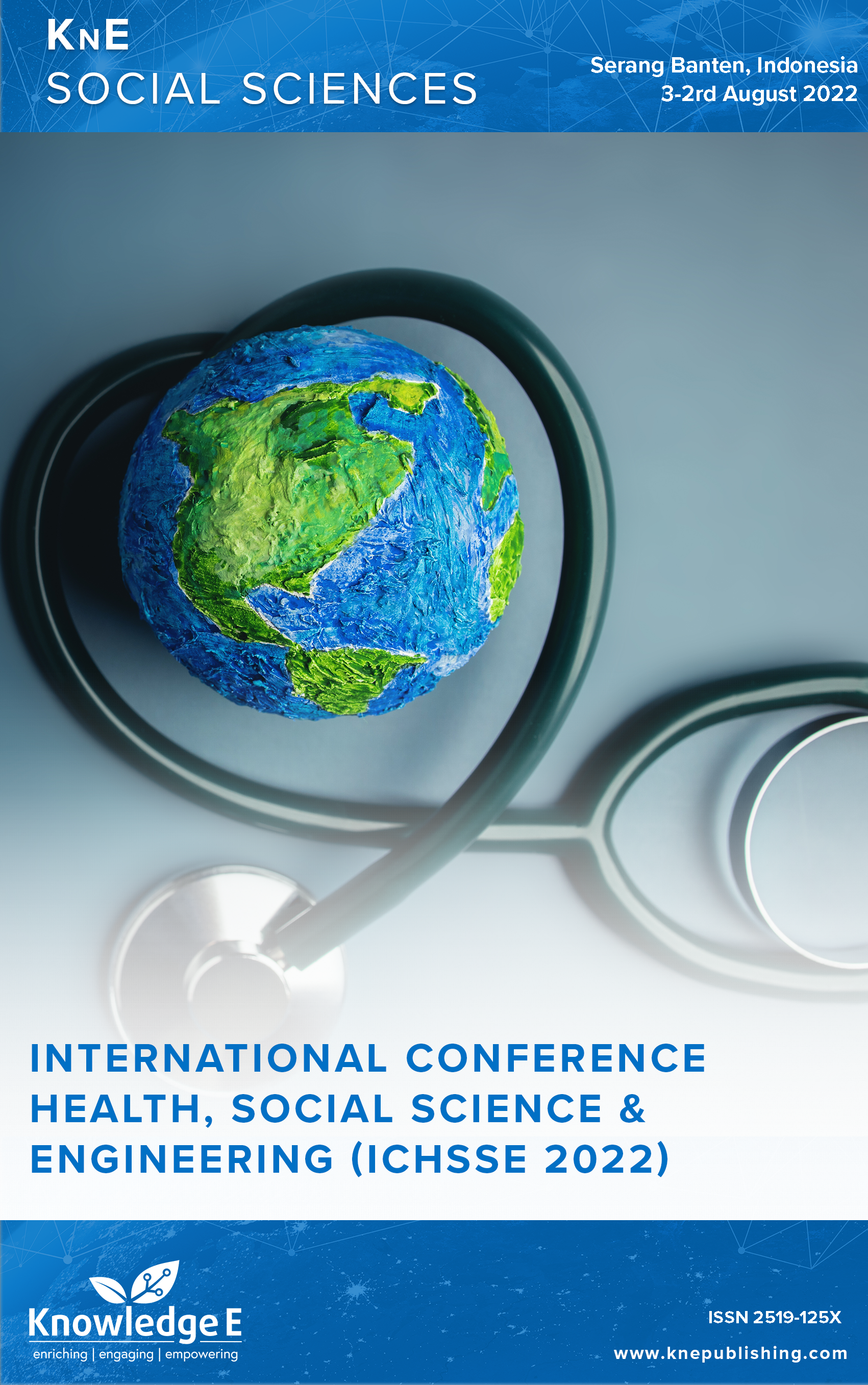Applications of Prenatal Yoga and Maryam Exercise for Reducing Back Pain in Pregnant Women at Third Trimester
DOI:
https://doi.org/10.18502/kss.v8i14.13828Abstract
The incidence of back pain in pregnant women occurs in all countries including Indonesia due to fetal growth, hormonal factors, activity, and other factors. Prenatal yoga and Maryam exercise can overcome back pain complaints in pregnant women; however, they are rarely studied. The study aims to analyze the application of prenatal yoga and Maryam exercise so that the third trimester pregnant women do not feel back pain. This type of research was experimental observation with a pretest-posttest design. The study was conducted at Masita Clinic, Cilegon in April-May 2022. The sample is 15 people with total population sampling technique. The research instruments were back pain questionnaire sheets and pregnancy exercise checklist sheets. Using the paired sample t-test, the data were normally distributed with the value of the One-Sample Kolmogorov-Smirnov Test, 0.2. The results of data analysis showed that there was a reduction in back pain during pregnancy in pregnant women who did prenatal yoga and Maryam exercise with (p-value: 0,000). Yoga and exercise can train the pelvic floor muscles and Maryam exercise can make pregnant women more calm, relaxed, and incorporate religious elements so that back pain complaints can be reduced.
Keywords: prenatal yoga, Maryam exercise, back pain
References
[2] Kristiansson. “Epidemology of back pain in pregnancy.” 2015 [Online]. Available: http://clinicalgate.com.
[3] Fraser C, Cooper MA. “Midwife textbook edition 14.” Jakarta EGC, 2009.
[4] Yosefa F, Hasneli Y. “The effectiveness of pregnancy exercise on reducing back pain in pregnant women.” Riau University, 2014.
[5] Megasari M. “Relationship between pregnancy exercise and back pain in third trimester pregnant women.” J Kesehatan Komunitas. 2015;3(1):17–20.
[6] Pratignyo. Yoga for pregnant women plus: Postnatal yoga I. Jakarta: Pustaka Bunda; 2014.
[7] Kurniati N, Hadisaputro S, Pujiastuti RSE. “The effect of Maryam prenatal exercise on labor duration: A systematic review.” Int J Nurs Health Serv (IJNHS). 2020;3(1):169– 183.
[8] Fitriana Y, Revika E. “Assistance for pregnant women towards comfortable childbirth with routine Maryam exercises during the pandemic.” Indonesia Berdaya. 2022;3(3):425–434.
[9] Setiyani T. “The effectiveness of classes for pregnant women using the Maryam method against anxiety levels in pregnant women.” Universitas Gadjah Mada, 2017.
[10] Bahri AS. “The effect of pregnancy exercise on reducing low back pain in primigravida mothers at the regional general hospital of Karanganyar Regency.” Jurnal Ilmu Keperawatan Indonesia. 2015;8(1).
[11] Rafika R. “The effectiveness of prenatal yoga on reducing physical complaints in third trimester pregnant women.” Jurnal Kesehatan. 2018;9(1):86–92.
[12] Delima M, Maidaliza M, Susanti N. “The effect of pregnancy exercise on reducing lower back pain levels in trimester II and III pregnant women at Parit Rantang Health Center Payakumbuh in 2015.” Jurnal Kesehatan Perintis. 2015;2(4):275145.
[13] Fitriani L. “The effectiveness of pregnancy exercise and pregnancy yoga on reducing back pain in third trimester pregnant women at the Pekkabata Health Center.” JKESMAS Jurnal Kesehatan Masyarakat. 2021;4(2):72–80.
[14] Lilis DN. “The effect of pregnancy exercise on lower back pain in trimester III pregnant women at the Putri Ayu Health Center, Jambi City, in 2019.” J Health Sci Gorontalo J Health Sci Commun. 2019;3(2):40–45.
[15] Suryaningsih M. “The effect of pregnancy exercise on reducing back pain in third trimester pregnant women at the Bangkalan Health Center.” Nursing Update Jurnal Ilmu Keperawatan. 2018;9(2):37-45. P-ISSN 2085-5931 e-ISSN 2623-2871.
[16] Shiri R, Coggon D, Falah Hassani K. “Exercise for the prevention of low back and pelvic girdle pain in pregnancy: A meta analysis of randomized controlled trials.” Eur J Pain. 2018;22(1):19–27.

